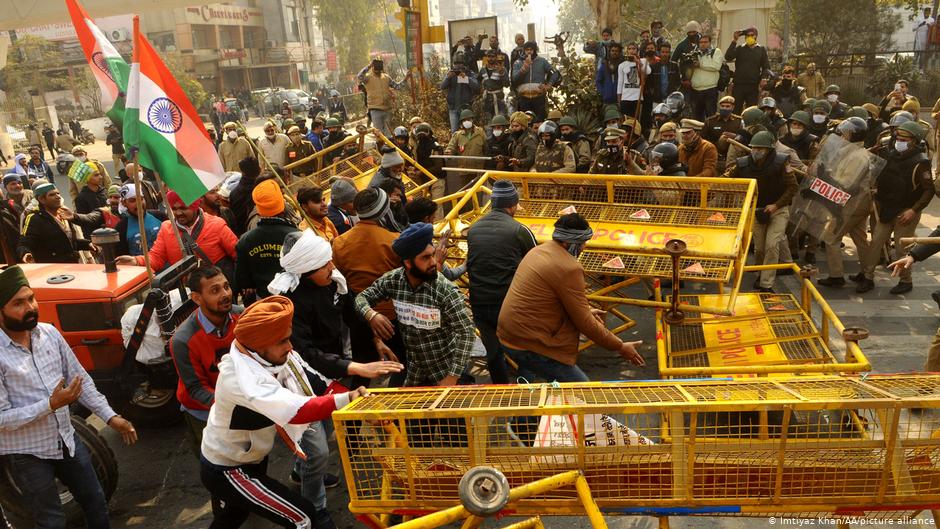The farmers' protests in India, which have been going on for two months, came to a head in the capital New Delhi on Tuesday. Striking farmers managed to make their way into the cordoned-off city center after previously camping out on the outskirts of the capital.
The farmers' anger is directed against a new law that aims to liberalize the market for agricultural products. Whereas state middlemen previously paid fixed minimum prices, in the future private companies are to be able to lower the price. This is because the many small farmers are in a weak negotiating position against the large corporations. A letter from the CPI (Maoist) Andhra Odisha Border Special Zonial Committee, quoted by a bourgeois newspaper, calls the current conditions the worst agrarian crisis in the country's history.

Police attacked the crowds streaming into the center with tear gas and batons, killing one demonstrator. The cops claim a tractor accident, the farmers speak of a gunshot. The Internet was also temporarily shut down in some districts. Still, the rulers could not prevent the angry masses from occupying the historic Red Fort. Prime Minister Modi raises the Indian flag on the palace every Independence Day. This year, however, the angry farmers raised their own flag. Nearby was the stage from which Modi was about to attend a National Day parade. Apparently, this reactionary pig then got it with fear: "Security forces took Modi back to his residence before a direct confrontation with farmers could occur."

By pushing all the way to the center of New Delhi on Independence Day, the farmers sent a strong message, even against their own officials from reformist associations. Fewer and fewer Indians are being lulled by Modi's reactionary Hindu nationalist policies. These new degradations in agriculture could develop an even greater explosive force, because agriculture is the livelihood of over 60 percent of India's workforce, according to bourgeois sources. These are bright prospects for the people's war that the CPI (Maoist) has been waging for decades alongside the poorest peasants. This has also been recognized by bourgeois Indian media, which warn against strong Maoist participation in the protests.
